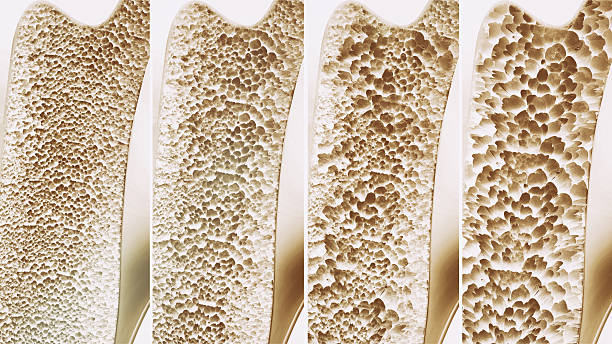Osteoporosis is a chronic bone disease that causes the bones to become thin and brittle. People with this disease are at higher risk of bone fractures when they fall, and it affects the hip, wrist and spine more.
Bones are usually dense and strong; they are meant to support the full weight of the body and absorb certain impacts without breaking. But with age, people’s bones naturally lose some density and the ability to heal or regrow.
Osteoporosis makes a person’s bones much more fragile than they should be at any age, and most people do not know they have this condition until it has become very severe or when they have their first unexpected fracture.
Causes
An abnormal decrease in bone density causes osteoporosis.
Your bones are living tissues that constantly replace their cells throughout your lifetime; your body naturally builds more bones than you can lose, leading to an increased bone mass or density over time. After age 35, the breakdown of bones happens faster than your body can replace, which leads to gradual loss of bone mass.
The chances of developing osteoporosis depend on how much bone mass you could accumulate during your youth. If you didn’t accumulate enough bone mass during your youth, as you age and your bone begins to diminish naturally, you may develop osteoporosis, which means you are losing your bone density faster than expected.
Post-menopausal women are at higher risk of developing osteoporosis.
Symptoms of Osteoporosis
Osteoporosis is a silent and long-term disease; it often has no symptoms until there is a bone fracture. However, there are still some signs that may warn you of the disease, such as losing an inch or more of your height, lower back pain or pain in the lumbar spine, shortness of breath and changes in natural posture. For example, bending forward when walking or standing.
Treatment
This disease has no cure, but the symptoms can be managed. So your doctor will recommend some medicine and lifestyle changes. The aim of the treatment is to strengthen your bones and prevent fractures.
Medications for osteoporosis include:
- Denosumab — an injection taken twice a year to slow down osteoporosis.
- Bisphosphonates — medication in the form of pills or injections taken once a year to slow down the natural loss of bone density.
- Raloxifene — reduces post-menopausal bone loss.
- Teriparatide — can be helpful for fractures sustained when taking other medicines for treatment.
- Menopause hormonal treatment (MHT) — can help females with osteoporosis.
Lifestyle changes for this condition include:
- Exercise.
- Quit smoking.
- Mild exposure to sunlight for the supply of vitamin D.
- Eating a healthy diet with plenty of calcium.



